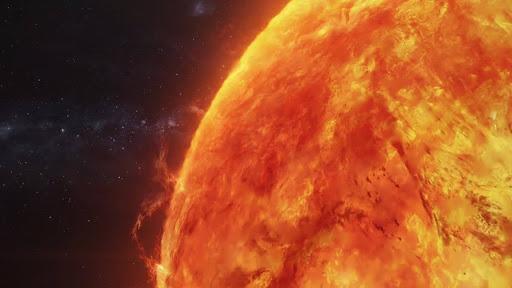
‘Peacock Jets’ on Sun Linked to Magnetic Flux Cancellation
The Sun, our star, is a fascinating and complex celestial body that continues to captivate scientists with its intricate dynamics. A recent study has shed new light on a phenomenon known as “peacock jets,” recurring fan-shaped eruptions in the Sun’s lower atmosphere. These jets are powered by magnetic flux cancellation, where opposing magnetic fields vanish, triggering energy release. This breakthrough discovery has significant implications for our understanding of solar dynamics and its impact on space weather, ultimately influencing our technology.
What are Peacock Jets?
Peacock jets are a type of solar phenomenon that has been observed for decades. These recurring eruptions appear as fan-shaped structures, often with a distinctive “peacock-like” pattern, in the lower atmosphere of the Sun. They are characterized by a rapid increase in temperature and density, accompanied by intense magnetic field activity. Peacock jets are typically short-lived, lasting only a few minutes, but can have a significant impact on the surrounding plasma.
The Role of Magnetic Flux Cancellation
Scientists have long been fascinated by the relationship between magnetic fields and solar activity. Magnetic flux cancellation, a process where opposing magnetic fields vanish, has been identified as the driving force behind peacock jets. This phenomenon occurs when magnetic fields of opposite polarity converge and cancel each other out, releasing a vast amount of energy in the process.
Researchers have discovered that peacock jets are triggered by the cancellation of magnetic flux between two oppositely polarized magnetic fields. This cancellation causes a sudden release of energy, which is then channeled into the formation of the fan-shaped jet. The precise mechanism by which this energy is released is still unclear, but scientists believe it is related to the reconnection of magnetic field lines.
Predicting Space Weather
Understanding the dynamics of peacock jets is crucial for predicting space weather, which has significant implications for our technology. Space weather can have a profound impact on satellite communications, power grids, and even the health of astronauts. By studying peacock jets, scientists can better predict the likelihood and intensity of space weather events, allowing us to take necessary precautions to safeguard our technology.
The discovery of the magnetic flux cancellation mechanism behind peacock jets also provides valuable insights into the complex interactions between the Sun’s magnetic field and its lower atmosphere. This knowledge can be used to improve our understanding of solar dynamics and the behavior of plasma in the Sun’s atmosphere.
Consequences for Space Weather Forecasting
The findings of this study have significant implications for space weather forecasting. By understanding the triggers and mechanisms behind peacock jets, scientists can develop more accurate models of solar activity. This, in turn, will enable us to predict space weather events with greater precision, allowing us to take proactive measures to mitigate their impact on our technology.
The peacock jets phenomenon also highlights the importance of continued research into the dynamics of the Sun’s lower atmosphere. By studying this region, scientists can gain a deeper understanding of the complex interactions between the Sun’s magnetic field, plasma, and radiation.
Conclusion
The discovery of the magnetic flux cancellation mechanism behind peacock jets is a significant breakthrough in our understanding of solar dynamics. This phenomenon has far-reaching implications for our understanding of space weather and the behavior of plasma in the Sun’s atmosphere. As scientists continue to study peacock jets, we can expect to gain a deeper understanding of the complex interactions between the Sun’s magnetic field and its lower atmosphere.
Ultimately, this research has the potential to revolutionize our ability to predict space weather, allowing us to safeguard our technology and protect our planet from the impacts of solar activity. As we continue to explore the mysteries of the Sun, we may uncover even more surprising and fascinating phenomena that shed new light on the intricate dynamics of our star.






